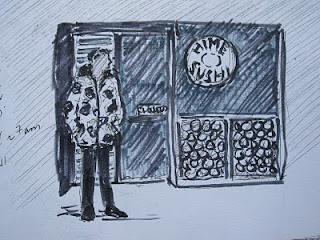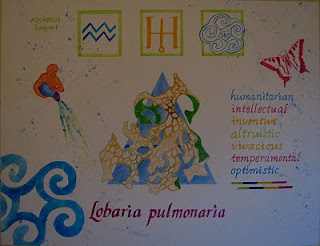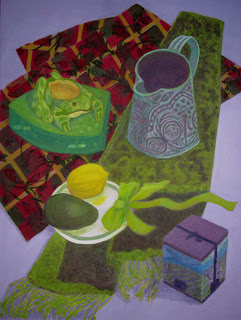
Some months ago in my reading, I came across that old Victorian expression "a brown study." She sat at the window in a brown study. Today we'd say "lost in thought." Within a week, I happened to find another reference to brown in a wonderful book COLOUR: TRAVELS THROUGH THE PAINTBOX by Victoria Finlay. She's an Australian journalist who relates the history of various artists' pigments as she travels in the 1990s to their geographical sources. About brown, she notes:
Social anthropologists B. Berlin and P. Kay in a controversial 1969 study researching colour terminology found that every human society distinguished between dark and light although some had no words at all for specific colours. In cultures that named three colours, those were black, white, red. The fourth and fifth to be added (in other cultures) were green and yellow in either order; the sixth would always be blue. Only at that level would there be acknowledgment of brown which, inevitably, was the seventh to receive a name.Well, interesting; and at that point, I conceived the idea to do a painting entitled "A Brown Study" which would play on different shades of brown. When I found our old brown teapot in the basement (sans lid, which had broken), things began to hum. My beautiful raku-fired vase presented greyer tones; a tannish teak dish came out of a studio corner; it was "that time of year" when the ornamental gourds call me and this striped one took me back to brown's roots in yellow and orange. When I put them all together, I decided to break the common rule (aren't they made to be broken?) to avoid placing things in the absolute centre of the composition. Cascading branches from our old pear tree (its trunk is shown above) would, I thought, break the dead-centre stability and project forward into space.
 I did a quick preliminary study, grabbing a small blue-green panel that I had on hand, and thought there was something magical about the brownish objects set against the sea-toned background. Then, when I laid in the first burnt sienna underlayers, (you can see the evolution here) I knew I'd find it hard to sacrifice that orange glow. So, as is usually the case, it didn't turn out quite as planned.
I did a quick preliminary study, grabbing a small blue-green panel that I had on hand, and thought there was something magical about the brownish objects set against the sea-toned background. Then, when I laid in the first burnt sienna underlayers, (you can see the evolution here) I knew I'd find it hard to sacrifice that orange glow. So, as is usually the case, it didn't turn out quite as planned.What did turn out is that this is my 65th logged painting, my 65th year (this journey was related previously -- and it's the best I've done so far.

















































